Simon Fujiwara brings lifesize replica of Anne Frank House to Austria
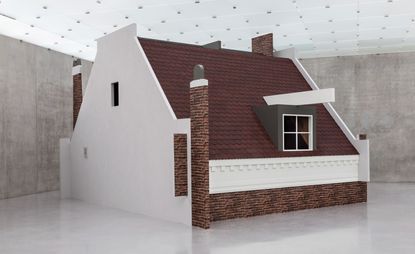
Simon Fujiwara — known for his delving into the pull of human mystery in his art — has built a museum within a museum at the Kunsthaus Bregenz, Austria, based on a toy model of the Anne Frank House purchased at the gift shop on a visit last year.
As ‘one of the most authentic architectural experiences on earth,’ Fujiwara explains, the Anne Frank House museum, has been restored to astonishingly accurate historic detail, to represent the original house in which Frank sought refuge from the Nazis as closely as possible for millions of visitors.
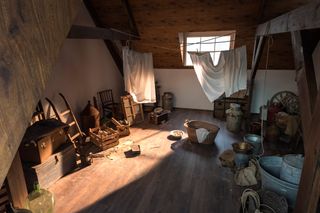
Hope House, 2018, by Simon Fujiwara, installation view of first floor at Kunsthaus Bregenz.
The wallpaper, for example, has been perfectly matched using found wallpaper manufactured in the GDR. ‘My mind was blown – I was standing there thinking, “the gift to the world that is the Anne Frank House is wrapped in German wallpaper”. For some this would be distasteful but for me it was a beautiful example of truthful humanity.’
On returning to his studio, Fujiwara came up with a meta-museum of his own. ‘If the Anne Frank House is a monument to a moment in history I knew I wanted Hope House to be a shifting, changing place that could act as a conduit of certain ideas of our time.’ He told Wallpaper*, as the exhibition opened to the public last week.
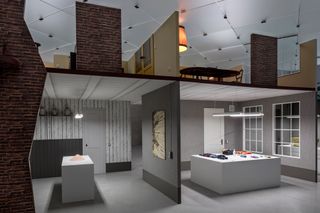
Installation view of first floor at Kunsthaus Bregenz.
In his architectural reconstruction based on the model Anne Frank House – first displayed at Dvir Gallery in Tel Aviv last year – Fujiwara has replaced items with objects that resonate in 2018, products and items he says make him feel uncomfortable, including a Pierre Hermé chocolate mask, based on an indigenous African mask, that the artist bought in Paris, and has kept in his fridge for years ‘because it terrifies and excites me.’
‘At first it disgusted me – how can a former colonising country allow the production of indigenous artefacts from a former colonial country as luxury chocolate? Chocolate and Africa as a visual connection was also dubious to me – it felt like it was confirming prejudices. Then I discovered that part of their marketing line was that the beans of the chocolate mask were also from Ghana – hinting at the idea of local economy being supported by this.’

Installation view of second floor at Kunsthaus Bregenz.
It’s just one of the objects within Hope House that question the power of product and the complexities and contradictions facing the contemporary consumer. ‘This object like many in the show make you feel things, desire, disgust, sadness, excitement – but for me, I can’t draw a conclusion on their right to exist because there is always a counter argument.’
The model museum he picked up in Amsterdam, itself a consumer object that represents something awful and tragic, now manufactured and sold to visitors as a souvenir – that at the same time, ensures Anne Frank’s story is not forgotten, ‘became for me, the perfect symbol of our times, where everything is connected and merged more and more. Philanthropy, capitalism, hope, terror, fantasy, fact…’ The consumer paradox, Hope House suggests, is perhaps ultimately unresolvable.
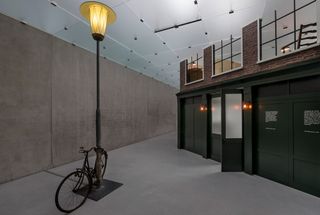
Installation view of first floor at Kunsthaus Bregenz.
Designed meticulously in exhaustive detail, Hope House plays with notions of taste, authenticity, history and the emotional tug of capitalism – but it doesn’t serve up a straightforward critique. ‘Today, when our entire world is more and more based on surface reactions and simple judgements I think it’s more important than ever to present no answers, but well-crafted and generous questioning.’

Installation view of ‘Hope House’ by Simon Fujiwara at Kunsthaus Bregenz.
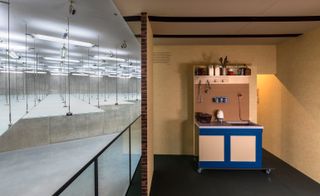

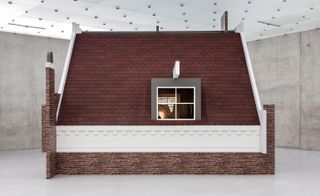
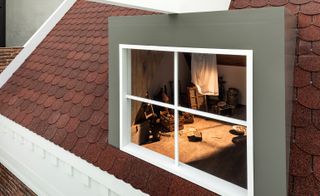

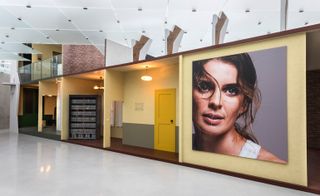
INFORMATION
‘Hope House’ is on view until 2 April. For more information, visit the Kunsthaus Bregnez website
Wallpaper* Newsletter
Receive our daily digest of inspiration, escapism and design stories from around the world direct to your inbox
ADDRESS
Kunsthaus Bregnez
Karl-Tizian-Platz
6900 Bregenz
Charlotte Jansen is a journalist and the author of two books on photography, Girl on Girl (2017) and Photography Now (2021). She is commissioning editor at Elephant magazine and has written on contemporary art and culture for The Guardian, the Financial Times, ELLE, the British Journal of Photography, Frieze and Artsy. Jansen is also presenter of Dior Talks podcast series, The Female Gaze.
-
 The 2024 Ivor Novello nominations for songwriting have been revealed
The 2024 Ivor Novello nominations for songwriting have been revealed77 British and Irish songwriters and composers make up this year's nominees, announced tonight at London's Groucho Club
By Charlotte Gunn Published
-
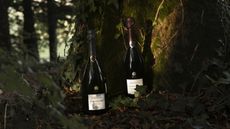 Why Bollinger’s La Grande Année 2015 champagne is worth celebrating
Why Bollinger’s La Grande Année 2015 champagne is worth celebratingChampagne Bollinger unveils La Grande Année 2015 and La Grande Année Rosé 2015, two outstanding cuvées from an exceptional year in wine-making
By Melina Keays Published
-
 Lexus installation explores time at Milan Design Week 2024
Lexus installation explores time at Milan Design Week 2024Lexus brought designer Hideki Yoshimoto’s ‘Beyond the Horizon’ to Milan’s Art Point, part of its ongoing series of collaborations with Fuorisalone
By Nargess Shahmanesh Banks Published
-
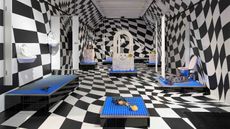 Edinburgh Art Festival 2023: from bog dancing to binge drinking
Edinburgh Art Festival 2023: from bog dancing to binge drinkingWhat to see at Edinburgh Art Festival 2023, championing women and queer artists, whether exploring Scottish bogland on film or casting hedonism in ceramic
By Amah-Rose Abrams Published
-
 Last chance to see: Devon Turnbull’s ‘HiFi Listening Room Dream No. 1’ at Lisson Gallery, London
Last chance to see: Devon Turnbull’s ‘HiFi Listening Room Dream No. 1’ at Lisson Gallery, LondonDevon Turnbull/OJAS’ handmade sound system matches minimalist aesthetics with a profound audiophonic experience – he tells us more
By Jorinde Croese Published
-
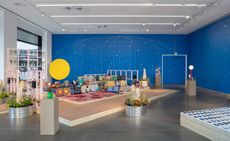 Hospital Rooms and Hauser & Wirth unite for a sensorial London exhibition and auction
Hospital Rooms and Hauser & Wirth unite for a sensorial London exhibition and auctionHospital Rooms and Hauser & Wirth are working together to raise money for arts and mental health charities
By Hannah Silver Published
-
 The best London art exhibitions to see now
The best London art exhibitions to see nowYour guide to the best London art exhibitions, as chosen by the Wallpaper* arts desk
By Hannah Silver Published
-
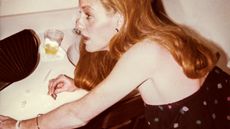 ‘These Americans’: Will Vogt documents the USA’s rich at play
‘These Americans’: Will Vogt documents the USA’s rich at playWill Vogt’s photo book ‘These Americans’ is a deep dive into a world of privilege and excess, spanning 1969 to 1996
By Sophie Gladstone Published
-
 Brian Eno extends his ambient realms with these environment-altering sculptures
Brian Eno extends his ambient realms with these environment-altering sculpturesBrian Eno exhibits his new light box sculptures in London, alongside a unique speaker and iconic works by the late American light artist Dan Flavin
By Jonathan Bell Published
-
![The Bagri Foundation Commission: Asim Waqif, वेणु [Venu], 2023. Courtesy of the artist. Photo © Jo Underhill. exterior](https://cdn.mos.cms.futurecdn.net/QgFpUHisSVxoTW6BbkC6nS-230-80.jpg) Asim Waqif creates dense bamboo display at the Hayward in London
Asim Waqif creates dense bamboo display at the Hayward in LondonThe Bagri Foundation Commission, Asim Waqif’s वेणु [Venu], opens at the Hayward Gallery in London
By Cleo Roberts-Komireddi Published
-
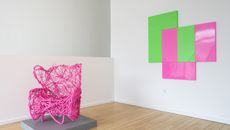 Forrest Myers is off the wall at Catskill Art Space this summer
Forrest Myers is off the wall at Catskill Art Space this summerForrest ‘Frosty’ Myers makes his mark at Catskill Art Space, NY, celebrating 50 years of his monumental Manhattan installation, The Wall
By Pei-Ru Keh Published